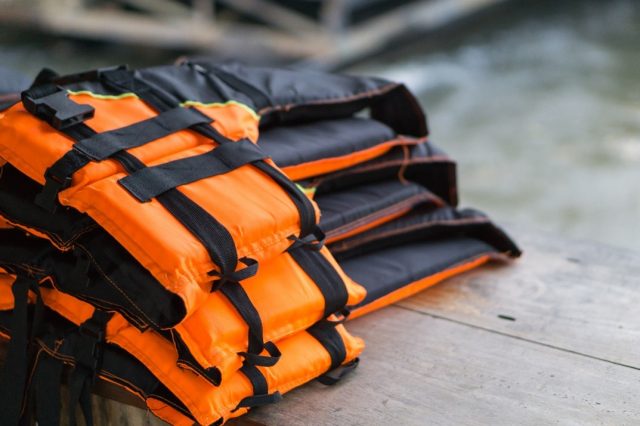Boating is a thrilling and enjoyable way to explore the waters, whether sailing the open sea, cruising on a lake, or navigating a river. However, Christopher Peyton Crawford notes the key to a successful and enjoyable voyage is prioritizing safety. Boating safety encompasses a range of practices, from preparing for your trip to understanding how to respond to emergencies. This boating enthusiast Christopher Peyton Crawford post provides essential tips to ensure your boating adventures are safe and memorable.
1. Understand Boating Laws and Regulations
Before setting sail, familiarize yourself with local boating laws and regulations. Christopher Peyton Crawford explains these can vary significantly depending on your location and the type of waterway you plan to explore. Ensure you have the necessary boating license or certification and understand the rules regarding speed limits, right-of-way, and prohibited areas.
2. Wear Life Jackets
The importance of wearing a life jacket cannot be overstated. Life jackets are lifesavers in emergencies, significantly increasing your chances of survival in the event of an accident. Ensure that every passenger on board wears a life jacket that fits properly. It’s also a good practice to have additional life jackets on board, just in case.
3. Prepare a Pre-Departure Checklist
Creating a pre-departure checklist is crucial to ensure you have everything you need for a safe and hassle-free trip. To make a comprehensive checklist, you need to consider several factors. Firstly, include all necessary safety gear, such as life jackets, helmets, and reflective vests. Secondly, navigation tools like maps, compasses, and GPS devices help you find your way and stay on track.
Thirdly, make sure to pack communication devices like walkie-talkies, satellite phones, or mobile phones with extra batteries in an emergency. Fourthly, carrying first aid supplies like bandages, antiseptics, and pain relievers can be useful in case of injuries or illness. Lastly, ensure you have enough fuel to complete your journey and avoid running out of gas.
Moreover, Christopher Peyton Crawford suggests that before embarking on your trip, you check the weather forecast and plan your route, taking into account any potential hazards like rough terrain, steep slopes, or water bodies. You can also research the availability of gas stations, rest areas, and accommodations to prevent any inconveniences. With a well-planned and organized pre-departure checklist, you can enjoy a safe and stress-free journey
4. Conduct a Safety Briefing
Before you embark, conduct a safety briefing for all passengers. This should cover the basics of boat operation, the location of safety equipment, and what to do in an emergency. Familiarizing everyone on board with safety procedures can significantly affect how effectively you respond to unforeseen events.
5. Maintain Communication Devices
In case of an emergency, Christopher Peyton Crawford explains, you will need to call for help. Ensure you have a waterproof and fully charged means of communication, such as a VHF radio or a cell phone in a waterproof case. It’s also wise to inform someone onshore of your plans, including your destination and expected return time.
6. Learn How to Swim
Water safety is of utmost importance when it comes to any water-related activities. Knowing how to swim is one of the most fundamental aspects of water safety. You and your passengers must learn to swim and become confident swimmers before going out on the water. In emergencies, swimming abilities can be crucial, especially if you need to assist others. So, it is essential to take swimming lessons and practice regularly to ensure you have the necessary skills to keep yourself and others safe in water. Additionally, wearing life jackets and other safety equipment can help prevent water accidents.
7. Avoid Alcohol and Drugs
Operating a boat under the influence of alcohol or drugs is not only illegal but extremely dangerous. Impairment can lead to poor judgment, reduced coordination, and increased risk of accidents. Save any alcoholic beverages for when you’re safely ashore.
8. Understand Navigation Rules
Familiarize yourself with basic navigation rules and signs. This includes understanding how to navigate buoys and markers, knowing the right-of-way rules, and reading charts and using navigation devices. Proper navigation prevents accidents and ensures a smooth voyage.
9. Be Prepared for Emergencies
Despite the best preparations, emergencies can still occur. Be prepared by having a well-equipped first aid kit and knowing how to use it. Learn basic emergency procedures, such as signaling for help, performing CPR, and using flares.
10. Respect the Environment
Safe boating also means being mindful of the environment. Avoid damaging sensitive habitats, dispose of waste properly, and be considerate of wildlife. Preserving the natural beauty of our waterways ensures future generations can enjoy them.
Boating offers an unparalleled sense of freedom and adventure. Still, it comes with a responsibility to prioritize safety. Following these essential tips from Christopher Peyton Crawford, you can protect yourself, your passengers, and the marine environment. Remember, a well-prepared boater is a safe boater. Whether a seasoned sailor or a first-time boater, let safety be your guiding principle on every voyage.








